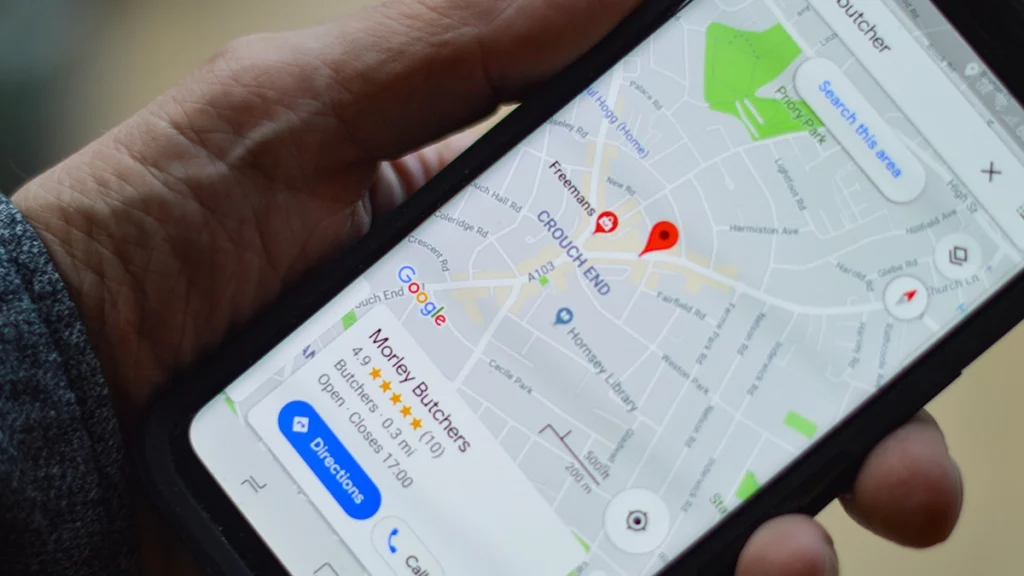If you’re a small business or start-up trying to improve your website traffic, you’ve probably heard the same advice more than once: “Just write more blogs.” And with tools like ChatGPT, creating blog content has never been quicker or more accessible.
But here’s the truth many businesses discover later: using ChatGPT for blog posts is a great starting point, but it’s nowhere near enough to build sustainable, long-term SEO growth.
AI-generated content can help you brainstorm ideas, structure your articles, and produce drafts in seconds. However, if you want to rank in Google, drive organic traffic, and convert readers into customers, you still need strategy, optimisation, and a strong human touch. For instance, clients who layered strategy on top of AI technology saw a 48% increase in traffic within just 90 days, showcasing the transformative power of a strategic approach.
In this post, we’ll break down why relying solely on ChatGPT for blog writing won’t deliver the SEO results you’re hoping for and what you should do instead to get the most out of AI.
Why So Many Businesses Use ChatGPT for Blog Posts
Before we dive into the limitations, it’s worth acknowledging why small businesses are turning to AI in the first place.
- It’s fast and can produce content on almost any topic.
- It’s free or low-cost, compared to hiring a writer or agency.
- It’s convenient, especially when you’re juggling everything else in your business.
- It helps overcome writer’s block and gives you useful starting points.
- It feels like an easy win for SEO – more content should mean more traffic, right?
Well… not exactly.
Google rewards useful, trustworthy, well-researched content instead of just any old content. And that’s where the limitations of AI become obvious.
The Problem: AI Content Alone Is Not Enough for SEO
A lot of businesses assume that publishing AI-generated blogs will automatically lead to rankings and traffic. In reality, using ChatGPT for blog posts without a proper SEO process creates several problems.
Let’s break them down.
1. ChatGPT Content Is Often Not Optimised for SEO
One of the biggest issues with using ChatGPT for blog posts is that the content rarely meets SEO best practices on its own.
Common issues include:
- Weak keyword targeting:
ChatGPT tends to produce generic content unless you give it a highly detailed SEO brief. Even then, it doesn’t truly understand search intent or ranking difficulty. - Missing focus keywords:
Often, the keyword won’t appear enough times, appears too often (keyword stuffing), or doesn’t appear in the right places (headings, URL, meta title). - Poor heading structure:
AI tends to generate headings that look neat but don’t follow SEO logic. This affects readability and your ability to rank for secondary keywords. - Thin content:
Google wants depth. ChatGPT often produces surface-level content that lacks expertise, research, or nuance. This makes it harder to compete with high-authority websites. - No E-E-A-T:
Google’s most important quality framework for ranking content: Experience, Expertise, Authoritativeness, Trustworthiness
AI has none of these qualities on its own. You need human insight to add them.
2. AI-Generated Blogs Are Often Too Short
Another common issue: ChatGPT tends to write articles that are only 300–600 words long unless prompted otherwise.
For many keywords, that’s simply not enough.
Google prefers content that:
- covers a topic in depth
- answers multiple related questions
- is valuable, helpful, and detailed
Thin content is one of the biggest killers of SEO performance. Short posts rarely stand a chance of ranking unless the keyword itself has very low competition or low search intent.
If you’re using ChatGPT for blog posts, you still need a human to:
- expand the article
- add real-world examples
- include industry insights
- address related questions
- build a narrative around your experience
Without this, the post stays basic, and basic doesn’t rank.
3. AI Content Often Doesn’t Sound Human
Although ChatGPT has improved massively, AI writing still has some giveaways:
- repetitive phrases
- generic templates
- predictable structure
- overly “polite” tone
- lack of personality
Readers want content that sounds like it was written by someone who understands them, not by a machine.
If your audience is a small business owner in the UK, they want relatable examples, real-world stories, practical advice, and a tone that feels human. This is exactly what ChatGPT struggles to do without human intervention.
You might start with an AI draft, but you need to rewrite sections, edit tone, and inject personality to truly connect with readers.
4. ChatGPT Doesn’t Build Internal Links (Unless You Tell It To)
Internal linking is a crucial part of SEO because it:
- helps Google understand your website structure
- strengthens topical authority
- guides users to important pages
- increases session duration
- improves indexing
AI won’t know your website structure unless you explain it, and in most cases small businesses don’t do. So, your content stays isolated. No links to relevant services, older blogs or supporting resources.
And Google sees it as a standalone piece, rather than part of a well-organised content strategy.
5. No External Links or Citations
Google rewards content that references authoritative sources.
However, ChatGPT often:
- avoids external links entirely
- makes up sources
- cites outdated or irrelevant information
This means your content may lack authority, trust, and credibility. These are all essential ranking factors.
6. Almost Every AI Blog Has No CTA
One of the biggest missed opportunities with AI-generated content is the complete absence of a call-to-action.
A blog without a CTA is a blog that:
- doesn’t convert
- doesn’t generate leads
- doesn’t drive enquiries
- doesn’t guide the reader
And if your blog isn’t helping your business grow, what’s the point?
Your CTA could be:
- a link to a related service
- a downloadable guide
- an invite to book a consultation
- a prompt to join your mailing list
But it should always be there.
7. AI Can Get Facts Wrong
ChatGPT doesn’t browse the live internet, but rather it predicts the most likely answer. That means:
- stats may be outdated
- facts may be inaccurate
- trends may be missing
- guidelines may be wrong
This weakens your article and, in some industries, could even cause compliance issues.
Fact-checking is essential.
8. AI Can’t Create a Strategy for You
Even the best AI content won’t work without:
- keyword research
- competitor analysis
- a clear content plan
- user intent research
- SEO optimisation
- internal linking
- consistent publishing
- strategic calls-to-action
ChatGPT writes.
It does not strategise.
To rank on Google, you still need a human-led SEO plan.
So… Should You Use ChatGPT for Blog Posts?
Absolutely — but strategically.
AI is an amazing tool when you use it the right way. It can:
- generate ideas
- speed up your writing process
- help you structure articles
- overcome writer’s block
- produce first drafts
- help you rewrite or rephrase content
But the first draft is not the final draft.
If you want your blog to rank, drive traffic, and actually support your business, you need to:
- refine the content
- add your expertise
- expand sections
- optimise for SEO
- include internal links
- add external sources
- write a strong CTA
- edit for tone and flow
In other words, use ChatGPT as your assistant, not your strategist.
How Small Businesses Can Get the Best Out of ChatGPT

If you still want to handle your blogs in-house, here’s how to improve the results while using AI effectively.
- Start with keyword research:
Even basic keyword tools (like Google Keyword Planner or Ubersuggest) can help you find topics worth writing about. - Provide ChatGPT with a proper SEO brief:
Tell it the keyword, audience, tone, structure, and length. - Make the draft a starting point, not the final product:
Expand the content. Add insights. Share examples. - Check the facts:
Don’t trust stats or claims blindly. - Add internal links:
Connect the blog to your services and related posts. - Link out to external sources:
Show credibility with reputable references. - Edit the tone:
Make it sound human and ideally, like your brand. - End with a CTA:
Guide users to take the next step. - Upload using SEO best practices:
That includes meta titles, meta descriptions, alt text, URL structure, categories, tags, and schema where relevant.
If You Don’t Understand SEO, How Can You Judge Whether ChatGPT’s Content Is Any Good?
At the heart of it, if the you don’t truly understand SEO and its requirements, how can you know whether the content ChatGPT is producing is actually optimised, or simply sounds good on the surface?
This is one of the biggest misconceptions with AI-generated content. ChatGPT is excellent at writing text that reads well, flows nicely, and feels comprehensive. But good writing and good SEO are not the same thing.
You might look at the blog and think, “Looks fine to me,” but without SEO knowledge, you may be missing critical issues such as:
- weak or missing keywords
- no search-intent targeting
- poor heading structure
- missing metadata
- no internal linking
- thin or generic content
- duplicated ideas that already exist on your site
- content that will never rank because the competition is too strong
ChatGPT won’t tell you these things. It doesn’t warn you that a keyword is too competitive, or that your draft won’t meet Google’s expectations. And if you don’t know what to look for, you’re essentially publishing content blind.
This is why AI should support your SEO strategy and not replace it.
Using SEO tools (such as Google Search Console, SEMrush, Ahrefs, or even simple browser add-ons) and applying your own knowledge helps you take ChatGPT’s draft and turn it into something that can actually rank.
ChatGPT can give you a starting point.
But SEO understanding is what turns that starting point into real, measurable results.
Final Thoughts
ChatGPT is a powerful tool, and for many small businesses, it makes blogging more achievable. But publishing AI-generated content without optimisation won’t give you the results you’re expecting.
SEO success still depends on strategy, expertise and human oversight.
Use ChatGPT to speed up the process, but don’t rely on it to carry your entire SEO strategy. If you’re serious about growing your website traffic, building authority, and attracting more customers, you need a long-term content plan backed by real expertise.


